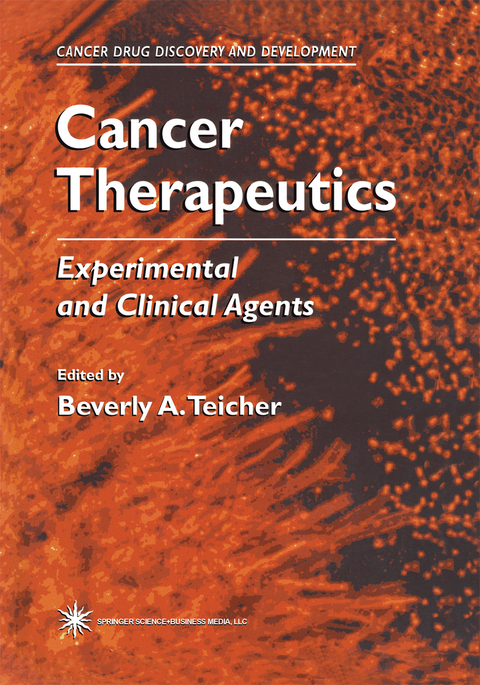
Cancer Therapeutics
Experimental and Clinical Agents
Seiten
1996
Humana Press Inc. (Verlag)
978-0-89603-460-0 (ISBN)
Humana Press Inc. (Verlag)
978-0-89603-460-0 (ISBN)
Cancer drug discovery has been and continues to be a process of ingenuity, serendip ity, and dogged determination. In an effort to develop and discover better therapies against cancer, investigators all over the world have increased our knowledge of cell biology, biochemistry, and molecular biology. The goal has been to define therapeuti cally exploitable differences between normal and malignant cells. The result has been an increased understanding of cellular and whole-organism biology and an increased respect for the flexibility and resiliency ofbiologically systems. Thus, as some new therapeutic targets have been defined and new therapeutic strategies have been attempted, so have some new biological hurdles resulting from tumor evasion of the intended therapeutic attack been discovered. Historically, anticancer drugs have originated from all available chemical sources. Synthetic molecules from the chemical industry, especially dyestuffs and warfare agents, and natural products from plants, microbes, and fungi have all been potential sources of pharmaceuticals, including anticancer agents. There is no shortage of molecules; the challenge has been and continues to be methods of identifying molecules that have the potential to be therapeutically important in human malignant disease. "Screening" remains the most important and most controversial method in cancer drug discovery. In vitro screens have generally focused on cytotoxicity and have identified several highly cytotoxic molecules. Other endpoints available in vitro are inhibition of proliferation, 3 inhibition of [ H]thymidine incorporation into DNA and various viability assays, based most frequently on dye exclusion or metabolism.
I. Cytotoxic Agents: Old and New.- 1 Nitrogen Mustards.- 2 Phosphoramide and Oxazaphosphorine Mustards.- 3 Development of the Nitrosoureas.- 4 Platinum Complexes.- 5 Anthracyclines.- 6 Topoisomerase I Inhibitors.- 7 DNA Topoisomerase II Inhibitors.- 8 The Taxoids.- 9 Sequence-Selective Groove Binders.- 10 Bis-Naphthalimides: Synthesis and Preclinical Evaluation.- II. Newer Strategies and Targets.- 11 The Enediynes.- 12 Matrix Metalloproteinase Inhibitors.- 13 Interferons and Other Cytokines.- 14 Discovery of TNP-470 and Other Angiogenesis Inhibitors.- 15 Antisense Oligonucleotides.- 16 Growth Factors and Growth Factor Inhibitors.- 17 Immunoconjugates.- 18 A Case for ras Targeted Agents as Antineoplastics.- 19 Gene Therapy.
| Reihe/Serie | Cancer Drug Discovery and Development |
|---|---|
| Zusatzinfo | 7 Illustrations, black and white; XII, 451 p. 7 illus. |
| Verlagsort | Totowa, NJ |
| Sprache | englisch |
| Maße | 178 x 254 mm |
| Themenwelt | Medizin / Pharmazie ► Medizinische Fachgebiete ► Onkologie |
| Medizin / Pharmazie ► Medizinische Fachgebiete ► Pharmakologie / Pharmakotherapie | |
| Medizin / Pharmazie ► Pharmazie | |
| ISBN-10 | 0-89603-460-7 / 0896034607 |
| ISBN-13 | 978-0-89603-460-0 / 9780896034600 |
| Zustand | Neuware |
| Haben Sie eine Frage zum Produkt? |
Mehr entdecken
aus dem Bereich
aus dem Bereich
Korrigierter Nachdruck 2020 mit allen Ergänzungen der UICC aus den …
Buch | Softcover (2020)
Wiley-VCH (Verlag)
CHF 59,95
Resilienz innovativ stärken : ein Praxishandbuch
Buch | Softcover (2023)
Kohlhammer (Verlag)
CHF 49,95


